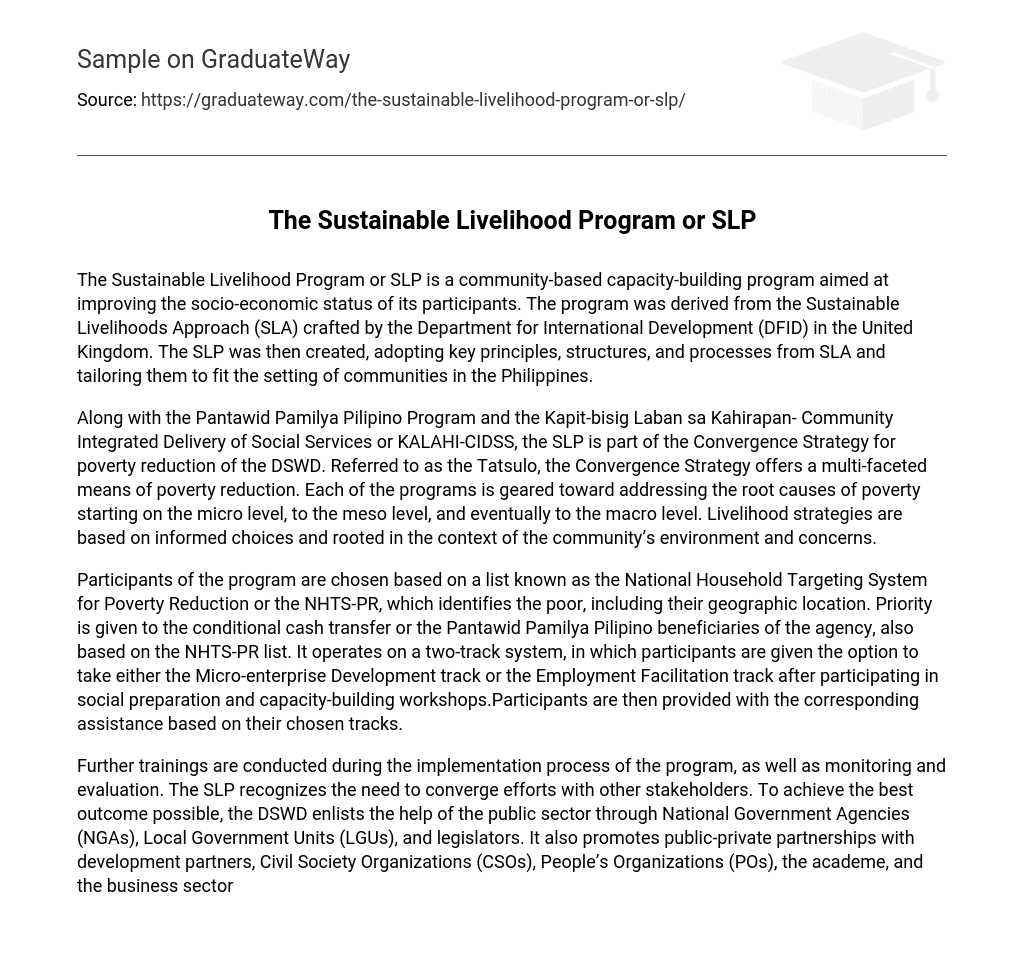The Sustainable Livelihood Program or SLP is a community-based capacity-building program aimed at improving the socio-economic status of its participants. The program was derived from the Sustainable Livelihoods Approach (SLA) crafted by the Department for International Development (DFID) in the United Kingdom. The SLP was then created, adopting key principles, structures, and processes from SLA and tailoring them to fit the setting of communities in the Philippines.
Along with the Pantawid Pamilya Pilipino Program and the Kapit-bisig Laban sa Kahirapan- Community Integrated Delivery of Social Services or KALAHI-CIDSS, the SLP is part of the Convergence Strategy for poverty reduction of the DSWD. Referred to as the Tatsulo, the Convergence Strategy offers a multi-faceted means of poverty reduction. Each of the programs is geared toward addressing the root causes of poverty starting on the micro level, to the meso level, and eventually to the macro level. Livelihood strategies are based on informed choices and rooted in the context of the community’s environment and concerns.
Participants of the program are chosen based on a list known as the National Household Targeting System for Poverty Reduction or the NHTS-PR, which identifies the poor, including their geographic location. Priority is given to the conditional cash transfer or the Pantawid Pamilya Pilipino beneficiaries of the agency, also based on the NHTS-PR list. It operates on a two-track system, in which participants are given the option to take either the Micro-enterprise Development track or the Employment Facilitation track after participating in social preparation and capacity-building workshops.Participants are then provided with the corresponding assistance based on their chosen tracks.
Further trainings are conducted during the implementation process of the program, as well as monitoring and evaluation. The SLP recognizes the need to converge efforts with other stakeholders. To achieve the best outcome possible, the DSWD enlists the help of the public sector through National Government Agencies (NGAs), Local Government Units (LGUs), and legislators. It also promotes public-private partnerships with development partners, Civil Society Organizations (CSOs), People’s Organizations (POs), the academe, and the business sector





